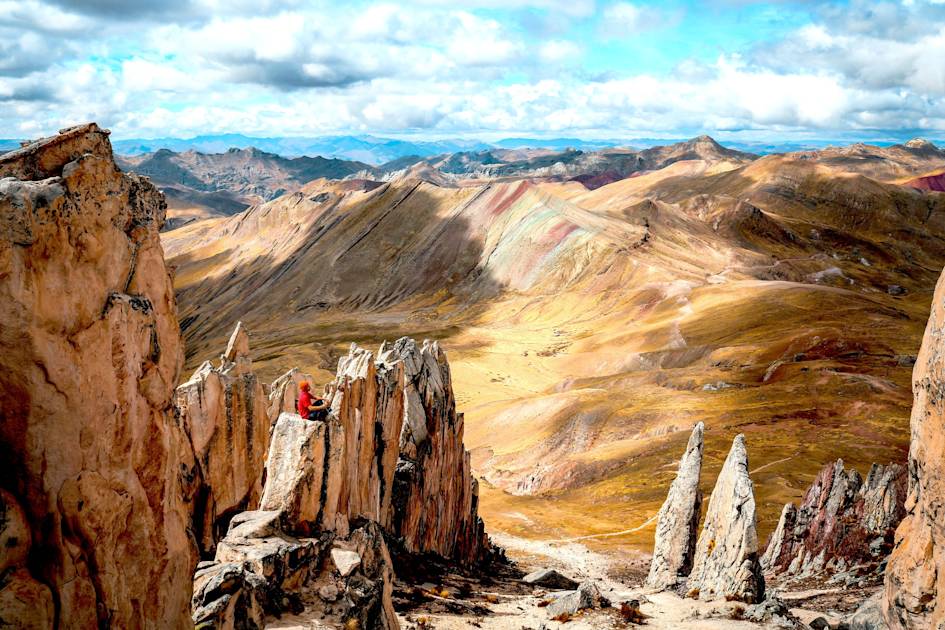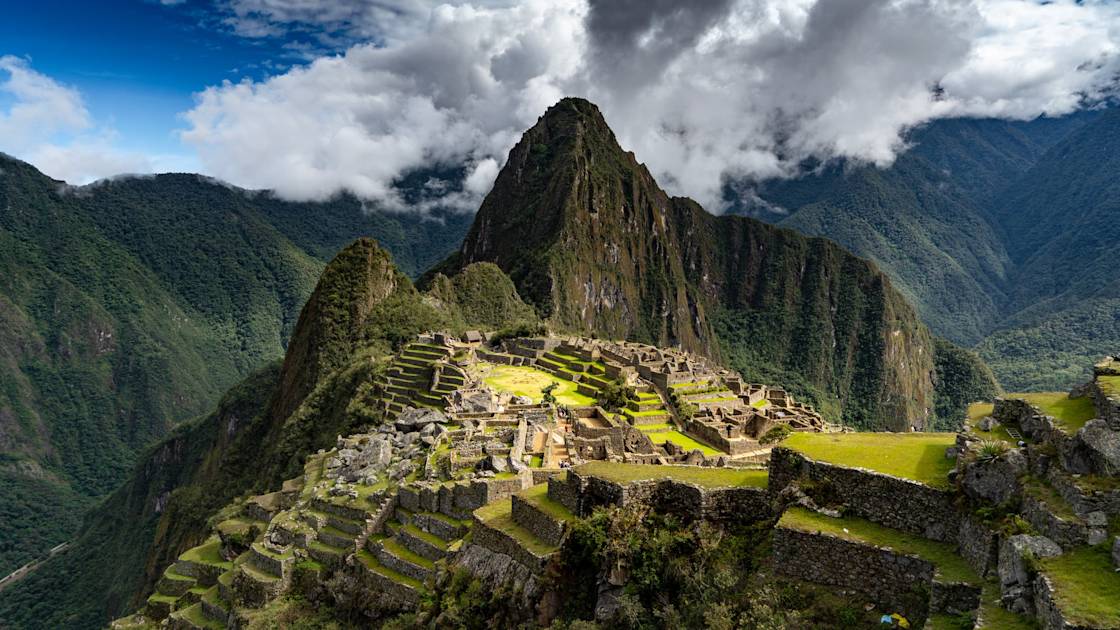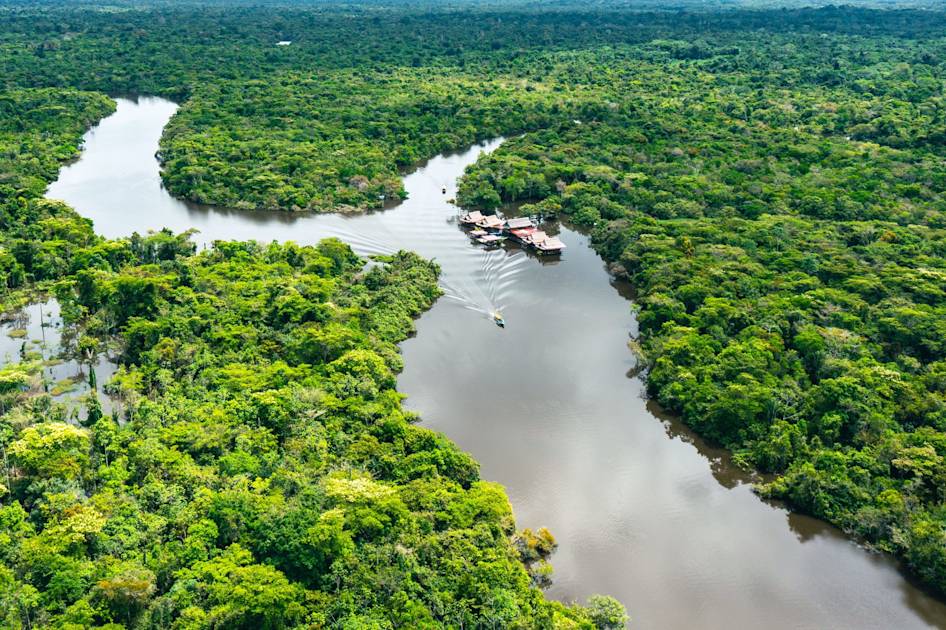For travellers seeking to trek to Machu Picchu, the Salkantay Trek and the Inca Trail stand out as the two most popular options. Both take you through the breathtaking landscapes of the Peruvian Andes on a journey to the ancient Incan citadel of Machu Picchu. But what’s the difference between these two routes? Which one is the best for you?
In this guide, we’ll compare the two treks based on distance, difficulty, scenery, costs, and permits to help you make the right choice. For both Machu Picchu hikes, it is recommended to spend time in Cusco to acclimatise, and so, to give yourself the best chance of avoiding altitude sickness during your four-day hike.

Salkantay Trek vs. Inca Trail: The Basics
Salkantay Trek
- Distance: 46 miles (74km)
- Days: 4-5 days
- Starting point: Mollepata
- Finishing point: Aguas Calientes
- Highest point: Salkantay Pass, 4,630m (15,190ft)
Inca Trail
- Distance: 26 miles (43km)
- Days: 4 days
- Starting point: Kilometre 82
- Finishing point: Machu Picchu
- Highest point: Warmiwañusca Pass (Dead Woman’s Pass), 4,215m (13,828ft)
Salkantay Trek vs. Inca Trail: Key Differences

The Salkantay Trek takes hikers through diverse landscapes. Starting in the small town of Mollepata, it takes you past Humantay Lake, a glacial lake encircled with snowcapped mountains. It climbs to the Salkantay Pass, which is the high point of the route at 4,630m (15,190ft), and takes you through the cloud forest before descending to coffee plantations and another famous Inca site, Llactapata. The route finishes at the town of Aguas Calientes, with hikers then heading on to the famous Machu Picchu the next day. It’s a mere bus ride away, or a short uphill hike.

Meanwhile, the Inca Trail follows an ancient stone path built by the Incas - part of a vast network of Inca paths known as Qhapaq Ñan. Starting at the network’s Km 82 marker, the Inca Trail winds through the Andes Mountains, passing historical ruins such as Sayaqmarka and Phuyupatamarca, before reaching Machu Picchu via the iconic Sun Gate.
Here, we discuss some of the key differences between the two different trails.
Permits and Accessibility

The Inca Trail is one of the most famous hiking trails in the world. To prevent overcrowding a permit system is in use. There are 500 permits per day, but this needs to include guides and support staff (who take up around 300 permits). You can only book a permit through a licensed tour operator, rather than independently. Permits sell out months in advance during peak season, requiring hikers to book ahead.
In contrast, the Salkantay Trek does not require permits, meaning more flexibility when booking. On average, only 50 hikers per day take on this trek, making it a more secluded and peaceful experience. You will, however, need to book an entrance ticket to Machu Picchu itself (which is often included in your tour package).
Cost Comparison

The Inca Trail is significantly more expensive, in large part due to the cost of the permit (which is included in the cost of your tour package). The Salkantay Trek can be anywhere from 33% to 66% cheaper, depending on the season and your accommodation choices.
Scenery

The Salkantay Trek takes you deeper into the mountains than the Inca Trail. It offers a more diverse range of landscapes, including snow-capped mountains, glacial lakes, jungles, and rolling hills.

The Inca Trail follows the ancient path of the Incas, weaving through dense cloud forests and high altitude grassland. A major highlight is arriving at Machu Picchu via the iconic Sun Gate, an exclusive experience for Inca Trail hikers.
Historical Sites Along the Way

The Inca Trail passes through numerous Inca ruins and archaeological sites, including Sayaqmarka, a village perched on a mountain spur, Winay Wayna and Phuyupatamarca (both known for their agricultural terraces), making it a great choice for history enthusiasts.
The Salkantay Trek also includes several ancient sites, such as Llactapata, which offers a unique distant view of Machu Picchu across the valley.
Inca Trail vs. Salkantay Trek: Which is the Harder Route to Machu Picchu?

The Salkantay Trek is longer (by about 20 miles) and more physically demanding than the Inca Trail, requiring more endurance for multi-day hiking. The toughest day on the Salkantay trek is the ascent of the Salkantay Pass, the highest point on the trek at 4,630m (15,190ft) followed by the descent to Huayracmachay. However, hikers are rewarded with views of turquoise lakes and the Pumasillo and Humantay mountains in the distance.
However, the Inca Trail is also tough, with steep ascents and descents. You’ll be hiking around six to nine hours each day, with the toughest day being the hike over Dead Woman’s Pass (4,215m/13,828ft).
Which Trek is Right for You?

Final Verdict: Which Should You Choose?
Choose the Salkantay Trek if you want a less crowded trek with stunning, diverse natural landscapes.
Choose the Inca Trail if you want a historical journey along ancient paths, with access to Machu Picchu via the Sun Gate and more Inca ruins along the way.
Inspired? Check out our Adventures to Machu Picchu, featuring both the Salkantay Trek and the Inca Trail.



